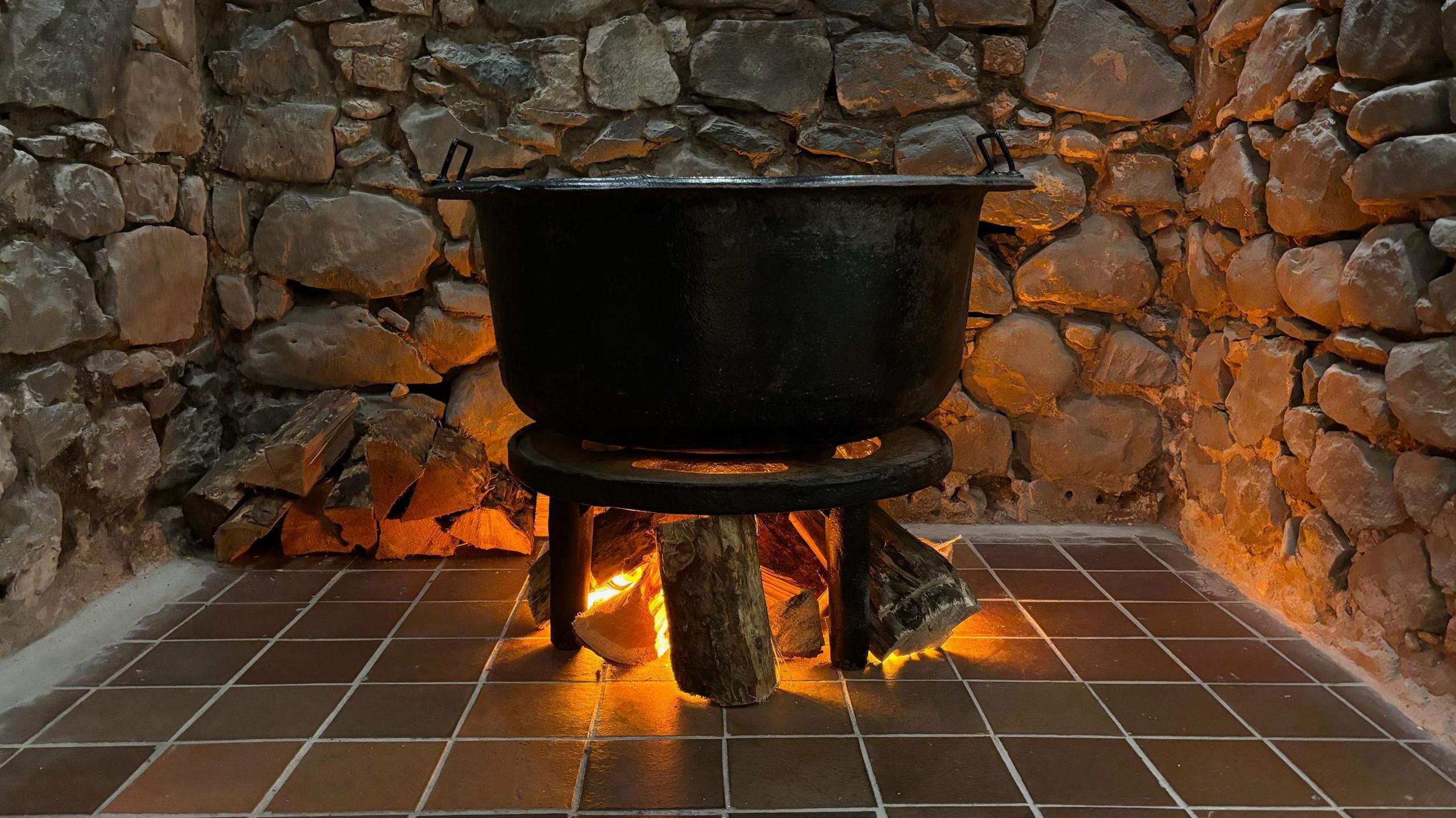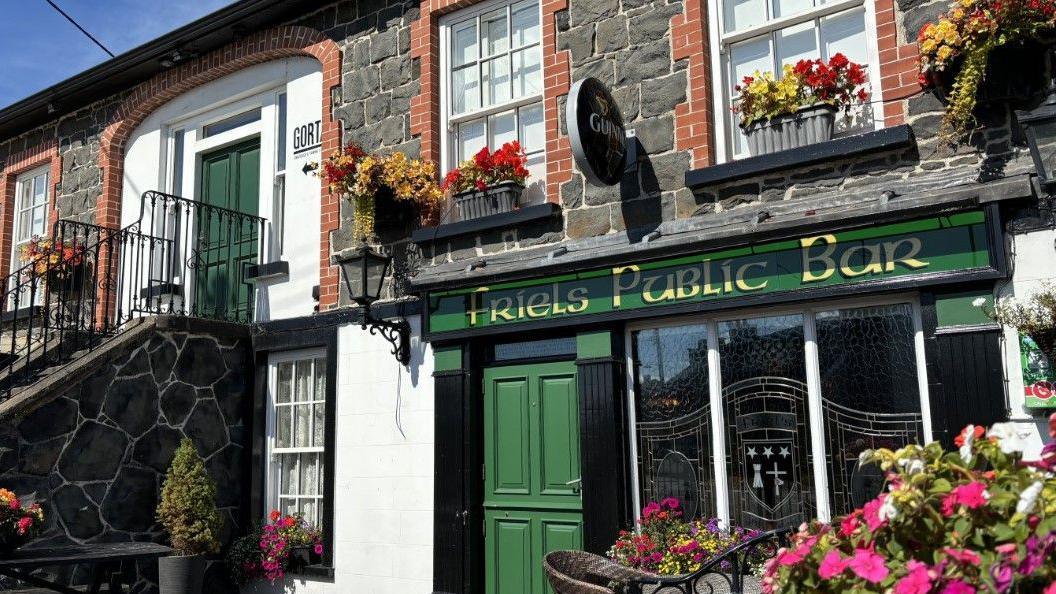Famine era soup pot found sitting in a beer garden

The cast iron cooking pot was used for soup during the Great Famine
- Published
A cast iron pot which was used as decoration in a County Londonderry beer garden is now at the centre of a new visitor attraction.
The pot which was located at Friel's pub in Swatragh was used to feed hundreds of people during the Great Famine.
It was only when a small internal window was discovered during renovations that the history of the pot and the pub itself was revealed.
The story is now being told at a visitor attraction - Gorta, Swatragh’s Famine Story - in the village.

Dermot Friel said not much is known about the famine history of Mid-Ulster
Dermot Friel, who owns the pub, said he had no idea of the cast iron pot's value.
“Honestly it sat out in the beer garden at the back for a number of years," he said.
After starting renovations during the Covid-19 lockdowns, Mr Friel found a small window on the premises and after consulting a historian, it was discovered that the site had been used as a soup kitchen during the Great Famine of 1845-51.
“I suppose as you get older you get more interested in history and your roots and where you're from, and exactly what happened on the site here," said Mr Friel.
"That research brought to fruition the centre we have today.”

Dr Ciarán Reilly and Dermot Friel at the new visitor centre
Dr Ciarán Reilly is a famine historian from Maynooth University in Kildare.
He said the pot was in great condition, and the history of the site as a doctor's surgery and soup kitchen was backed up by documentation.
“We know from the records about 300 people per day were fed here at the height of the Great Famine.
"Three million people on the island of Ireland were fed from soup kitchens such as this.
"Often we talk about the death and the despair that surrounds the Great Famine, but we don't talk about the stories of heroes like Dr Mooney who provided for local people here and kept people alive."

Friel's pub in Swatragh and its new neighbour - the visitor centre
'Quite a famine silence'
Also on display at the visitor centre is a list of the names of people from the area who entered workhouses or emigrated during the famine.
It is estimated that during the Great Famine, the population of Ulster fell by 340,000 people – a drop of 15.7% - because of death and emigration.
Cathy O’Neill, a local history guide, said people of Irish descent were increasingly eager to know their family history.
“People from North America and Canada are very interested in reconnecting with their roots, and this is a great way to for them to try and research their family history," she said.
"If they have a name or a date, they can look up and find out what happened, what their circumstances were and where and why they emigrated."

Cathy O'Neill says people of Irish descent are interested in their family history
The Great Famine is a dark period in Irish history but Cathy O’Neill said people wanted to take the “difficult step” to connect with the past.
"There was quite a famine silence when people didn't really want to talk about it. There's a shame associated with it as well," she said.
"But now we've got to a point where people are comfortable talking about that history, and they want to know their family history."
Gorta, Swatragh’s Famine Story centre has interactive displays, artwork, tours and the original famine pot on display.